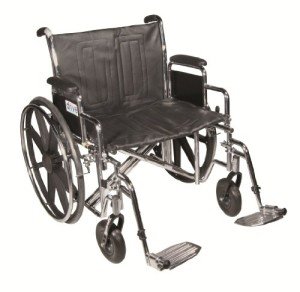Bariatric Transit 24 Inch Wheelchair
A bariatric wheelchair is perfect if you need a chair with a bigger seat width and greater weight capacity. This resilient wheelchair has a nylon cushioned seat that extends 24 inches large with swing-away footrests. It has substantial 4 caster mobility and attendant locks for safe stops. The heavy-duty slide tube frame can support as much as 450 pounds.
Weight Capacity
When choosing a wheelchair on your own or for an enjoyed one, it is very important to think about the weight capacity. Basic wheelchairs can accommodate up to 250 pounds, but bariatric chairs have the ability to support as much as 700 pounds. This difference in capacity is the primary factor that bariatric wheelchairs are tougher and heavier than standard designs.

To help chauffeurs securely transport passengers who utilize bariatric wheelchairs, it is vital to have vehicles equipped with proper equipment. This includes wheelchair lifts and ramps that can manage the increased size and weight of the chair. Furthermore, chauffeurs must receive training on how to steer these large mobility aids.
The Medline folding extra broad bariatric transport wheelchair has a spacious 24" seat and a carbon steel frame with rust- and chip-resistant chrome plating. It likewise includes easy-to-clean vinyl upholstery and swing-away footrests with a push-button adjustable height feature. This durable wheelchair has a weight capacity of 500 pounds.
When selecting bariatric mobility aids , it is important to request for advice from a doctor or mobility expert. They can evaluate your physical condition and recommend the very best mobility option for you. They can also help you identify if Medicare or personal insurance coverage covers the cost of your wheelchair.
Wheelchair Frame
A wheelchair frame is the primary support system that holds the other parts of the chair. The frames are made from a range of materials, including aluminum, titanium, and carbon fiber. Stiff manual wheelchairs are created with performance in mind and use the principles of sports bicycle frames-- triangles are one of the strongest shapes available and engineers have utilized this knowledge to create frames that develop a rigid system that utilizes less energy for propulsion than more flexible frames.
The option of wheelchair frame is frequently based upon the needs and top priorities of the client as examined by their OT/PT or other clinician. For example, a front frame angle is a crucial configuration as it impacts how well the client can move or self-catheterize. Similarly the seat to footplate height is an important aspect for positioning and balance.
The majority of wheelchairs have the choice to be configured with a fixed or reclining frame. For those who require a more stable chair for stability or for transport in automobiles, a repaired frame is best. This is especially true for those who require a bariatric chair with a broader seat width or higher weight capacity.
Folding frames have a conventional "cross-brace" or X design that allows the chair to fold by bringing the side rails together, although there are other styles offered for folding chairs, such as a scissor brace frame (Kuschall Champion) which reduces the variety of moving parts and therefore can be lighter than the cross-brace designs. Other options for folding frames consist of swing-away legrests and removable arms.
Numerous makers also provide a series of choices for the wheelchair frame front end, such as the frame angle. A 90 degree frame angle places the feet at a natural position for pressing, while a 75 degree frame angle places the feet more forward. The choice of frame angle must be thoroughly considered as the more forward position might make it challenging for the wheelchair user to overcome challenges or might trigger a wheel capturing on dropped curbs and creating vibration.
Stiff frames are normally made from aluminium, although some designs have a dual tube construction that resembles the sport frames utilized in biking, to assist increase strength and stability. Carbon Fibre is another material used in the frame building of some wheelchairs, offering an even stiffer and lighter frame.
